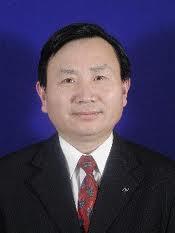Seminar 2nd December 2011 noon Room 2001, Building 22
Sloshing Dynamics and Numerical Modelling
Professor Qingwei Ma
City University
- Web page
- http://www.staff.city.ac.uk/q.ma/
- Categories
- Ship Hydrodynamics, Wave propagation
- Submitter
- Marcus Erridge
ABSTRACT:
Sloshing waves are one of main concerns when designing FPSOs and LNG/oil tankers and so have received numerous studies over the past several decades. Nevertheless, there are still many uncertainties associated with wave breaking and splashing, formation of air pocket and air bubbles, behaviours of impact pressure and dynamic interaction between wave impact and structural response during violent sloshing. This presentation will give a brief review on recent work in this area based on the proceeding of ISOPE conferences and will then concentrate on research work carried out by the Hydrodynamics Research Group at City University London. This will include the numerical methods developed, numerical results obtained and some data measured in experiments by collaboration with Harbin Engineering University, China. At the end of presentation, some existing challenges will be discussed.
BIOGRAPHY:
Qingwei Ma is currently a Professor of Hydrodynamics, Head of Hydrodynamics Research Group, Deputy Director of Construction Processes Research Centre, in School of Engineering and Mathematical Sciences, City University London. He is also a visiting Professor of Harbin Engineering University, China. He now serves as Chair of the International Hydrodynamic Committee of the International Society of Offshore and Polar Engineers (ISOPE).
Research topics of the research group he led cover (1) Nonlinear wave/current loading; (2) Freak waves; (3) Fully nonlinear Interaction between waves/current and fixed/floating structures; (4) Sloshing waves; (5) Wave impact; (6) Marine renewable energy; (7) Oil Spill; and so on. His group has recently proposed and developed a numerical method called QALE-FEM and the MLPG_R method. The former deals with fully nonlinear potential waves and their interaction with marine structures, while the latter is for studying violent breaking waves. All of them have been successful in simulating different large/violent water waves and/or their interaction with various structures.
